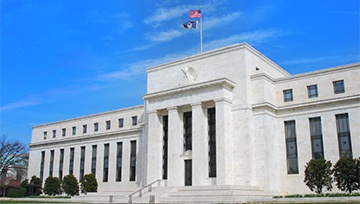To get the Asia AM Digest every day, SIGN UP HERE
Today was a rather fluctuating day in currency markets. It began with a sharp US Dollar selloff that was accompanied by local 2-year government bond yields declining. Indexes such as the Nikkei 225 and S&P 500 futures also joined the drop as gold, the anti-fiat alternative, rose.
Later on during the second half of the session, this behavior reversed course. This is why the US Dollar ended Monday more or less unchanged against its peers ahead of Tuesday’s testimony from Jerome Powell. Perhaps indecision in the markets ahead of what is arguably one of the more important events this week may have played a role here.
Not all currencies ended the day little changed though. The Canadian Dollar was one of the worst performing ones. Newswires attributed this partly to comments from President Donald Trump who said that the “US must be smarter on trade and loses a lot to Canada”. Mr. Trump brought this up as NAFTA negotiations are in their seventh round of debate.
Still, most of the Loonie’s selling occurred prior to this comment when the greenback was recovering from earlier losses. A similar situation happened to the Swiss Franc which also underperformed. Overall, it appeared as though the appreciation of the US Dollar during the second half of the day had a more consequential impact on other currencies as opposed to its depreciation earlier.
Meanwhile, the New Zealand Dollar took a hit towards the last few minutes of Monday’s session. Local trade data showed that the country’s deficit increased by more than expected.
DailyFX Economic Calendar: Asia Pacific (all times in GMT)

DailyFX Webinar Calendar – CLICK HERE to register (all times in GMT)

IG Client Sentiment Index Chart of the Day: AUD/USD

CLICK HERE to learn more about the IG Client Sentiment Index
Retail trader data shows 40.0% of AUD/USD traders are net-long with the ratio of traders short to long at 1.5 to 1. In fact, traders have remained net-short since Dec 19 when AUD/USD traded near 0.75109; price has moved 4.4% higher since then. The number of traders net-long is 6.0% lower than yesterday and 6.5% lower from last week, while the number of traders net-short is 2.1% lower than yesterday and 4.3% lower from last week.
We typically take a contrarian view to crowd sentiment, and the fact traders are net-short suggests AUD/USD prices may continue to rise. Traders are further net-short than yesterday and last week, and the combination of current sentiment and recent changes gives us a stronger AUD/USD-bullish contrarian trading bias.
Five Things Traders are Reading:
- Elliott Wave Webinar: Evidence Mounts of US Dollar Reversal by Jeremy Wagner, CEWA-M, Head Forex Trading Instructor
- NZ Dollar Hurt by Trade Deficit, Focus Remains on Other Factors by Daniel Dubrovsky, Jr. Currency Analyst
- Weekly Technical Perspective on USD/CAD, USD/JPY and GBP/CAD by Michael Boutros, Currency Strategist
- Bitcoin Trend Unclear as Net-Long Positions Fall by the DailyFX Research Team
- FX Markets Eye Eurozone and US Inflation, US and Canadian GDP by Christopher Vecchio, Sr. Currency Strategist
To get the Asia AM Digest every day, sign up here
To get the US AM Digest every day, sign up here
To get both reports daily, sign up here






